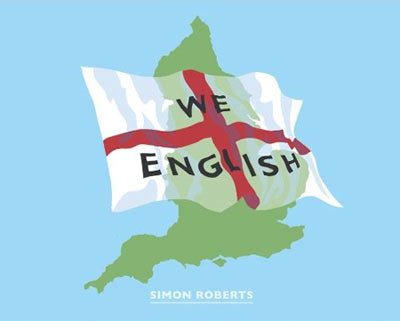Review: We English by Simon Roberts

Turning the camera onto one’s own country poses many risks. In order for the work to have lasting artistic value there are many problems to deal with. The work can become too sentimental, too nationalistic, too propagandistic, too positive or too negative, it can end up containing too much navel-gazing, it can look to similar to the ground-breaking work by someone else (or not similar enough), and the list goes on and on and on. In a nutshell, turning the camera onto one’s own country is one of the hardest thing to do. So here we have We English, in which Simon Roberts presents his images of England and the English - effortlessly steering around all thosee aforementioned obstacles.
Roberts also stays clear of other views of England we might be very familiar with, such as, for example, Martin Parr’s (Think of England). We English is closer to John Davies’ The British Landscape, even though there are various differences. Of course, a body of work has to stand on its own, and it has to reflect the photographer’s voice. But given the context of the portrayal of a country, comparisons with older work by other artists can - and probably should - be made. Such comparisons are not about finding out which photographer is the better artist - debates about that are almost completely pointless, they are about discovering more in each artist’s individual work by seeing where the different points of focus might lie.
We English adopts the slightly elevated vantage point known from painting, using a large-format camera. The photographs indeed look like paintings, with their often vast vistas, in which people often are mere specks. It’s almost as if the work wasn’t so much about the English as about the people living in the area known as England - and even though at first sight that might sound like just the same group of people, it actually isn’t. The English are not portrayed as people doing something or having certain habits; they are portrayed as acting against a certain background, which, and herein lies the crux, will not change at all (or not much) with time. Unlike in the case of Parr’s portraits of the English, which because of the fashion and hair styles clearly give away the time when they were produced, Robert’s are less tied to a particular time (of course, at some stage in the future we might view this work as “taken when those photographs mimicking paintings were en vogue”). They are more universal.
Of course, this timelessness, this zooming away from the people leaves the viewer with the exact opposite choice: Well, we can barely see the English in these photos! But I very much suspect that few viewers will voice such a complaint.
Given the universality that I find in We English, the book has an appeal that extends beyond the borders of England. Whatever the people in those photographs are doing might define them as “the English”, but it can also relates to other people. And what better portrait of your own country could you create than one that does talk about our human condition?
We English, photography by Simon Roberts, introduction by Stephen Daniels, 112 pages, Chris Boot